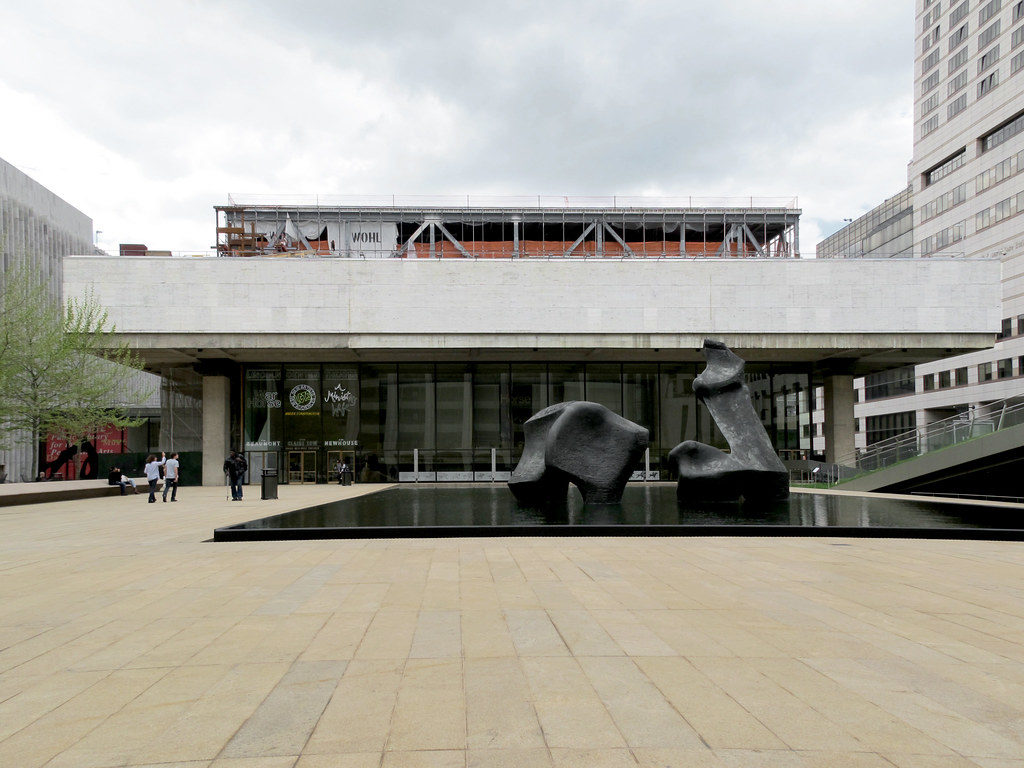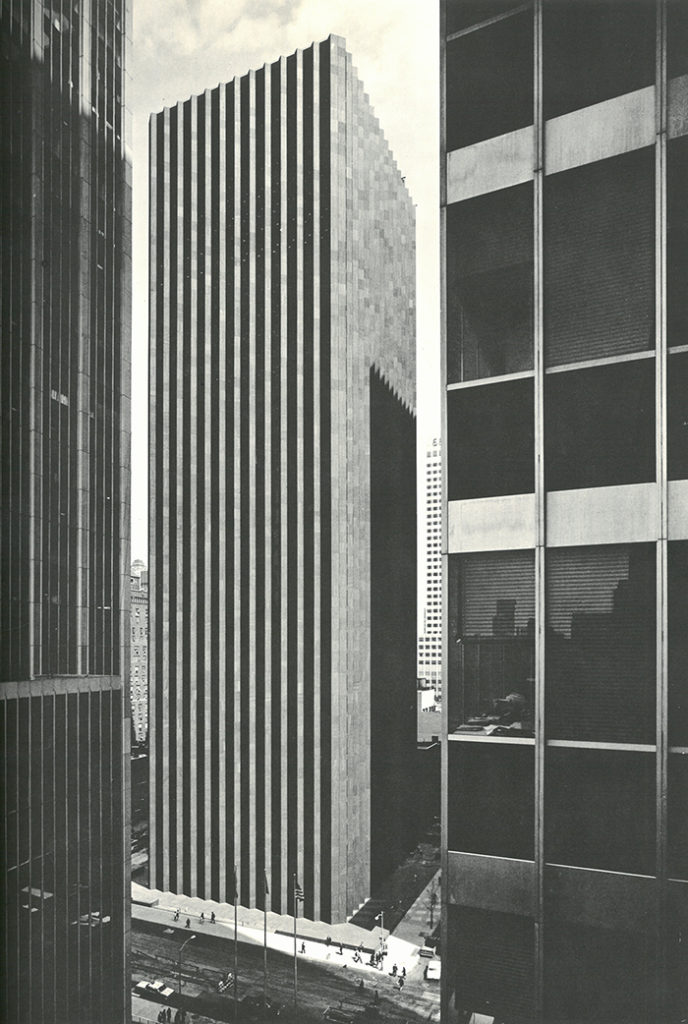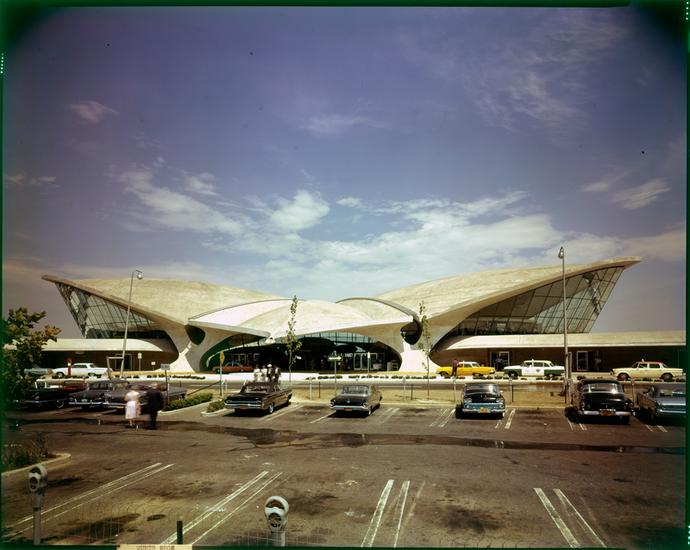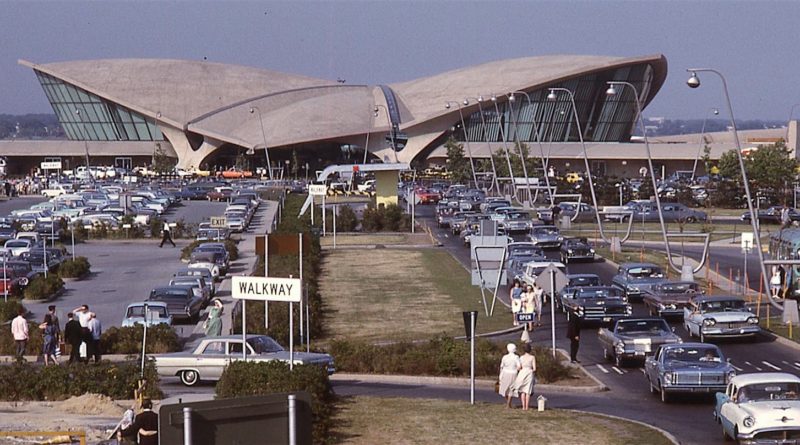A toast to the great 20th-century architect Eero Saarinen! The Modernist icon was born on this date in 1910 in Finland. He immigrated to the United States with his parents when he was thirteen years old. His father Eliel Saarinen was himself a brilliant architect; his son would learn from the best.
Eero Saarinen was a versatile furniture designer and prolific architect, perhaps best known in the states as designer of the St. Louis Gateway Arch, an ambitious and even surreal monument that has come to define the city of St. Louis — and the American Midwest in general. When the Arch opened in 1965, it automatically entered the pantheon of great works of American art.
Saarinen was known as an architectural chameleon of sorts, shifting styles to fit the project. Although he died relatively young, at age 51 of a brain tumor, he gave New York City three very memorable, completely different buildings.
Sadly he did not live to see any of them completed (nor the Gateway Arch for that matter). Work was completed by his firm Eero Saarinen and Associates.

Vivian Beaumont Theater (150 West 65th Street, at Lincoln Center)
Completed four years after Saarinen’s death, the Vivian Beaumont was designed as part of the Lincoln Center complex, thus its concrete and glass containment works in sync with the other buildings in the plaza.
Friendly but formal, this massive theater remains as the only Broadway house outside the traditional Broadway district and has a notable thrust stage that gives performances a virtual in-the-round feel. Last year, New York Magazine ranked the Vivian Beaumont as the second best Broadway theater in New York (after the Richard Rodgers Theatre).
There’s are also two other theaters in the building — the Mitzi E. Newhouse Theater (for off-Broadway productions) and the Claire Tow Theater for off-off productions.
We talked about Saarinen’s involvement with this project in our podcast on Lincoln Center:

CBS Building (51 West 52nd Street)
Saarinen’s critics accused him lacking a defining aesthetic, something you might believe comparing the Lincoln Center playhouse to this lurching, severe structure on Sixth Avenue, affectionately nicknamed Black Rock.
Both the Vivian Beaumont and the CBS Building opened the same year, 1965. The CBS Building employs a moat of public space, and the building springs out of the crevice like an ominous plant.
On an avenue of steel, the rather scary CBS Building was the first to use reinforced concrete, although it’s draped in black granite.
It remains the headquarters of the CBS Corporation to this day. Black Rock was designated a New York City landmark in 1997.
From its landmark designation report: “When seen directly, the tower’s bays appear open, with relatively narrow granite piers alternating with relatively narrow window bays of single sheets of plate glass, but when viewed from afar and necessarily at an angle, the V-shape of the piers effectively eclipses the view of the glass, creating the effect of a gray granite slab.”

TWA Flight Center (JFK Airport, Queens)
If you’re gonna write home about a Saarinen building in New York, make it the kooky, sometimes foolish, always imaginative terminal he designed for TWA that was completed in 1962.
It’s a tragedy that he never saw any of his New York buildings — not to mention the Arch itself — in final form. The terminal is so exotic and loopy that it energized arriving passengers.
It has the unity of some organic space being, retro-futuristic down to its benches. Or as Saarinen describes: “All the curves, all the spaces and elements right down to the shape of the signs, display boards, railings and check-in desks were to be of a matching nature.”
It outlived TWA, which was bought out in 1991. Thankfully landmarked in 1994 — saving it from any potential urges to demolish its now-dated, spacy halls — it has recently reopened as the swanky retro TWA Hotel at JFK.
To hear more about the details of the TWA Flight Center — and Idlewild/JFK in general — listen to our show on the history of the airport.


1 reply on “Eero Saarinen and his three gifts to New York”
Ooh, thanks for telling me about that exhibit. I don’t work far from the Building Museum.